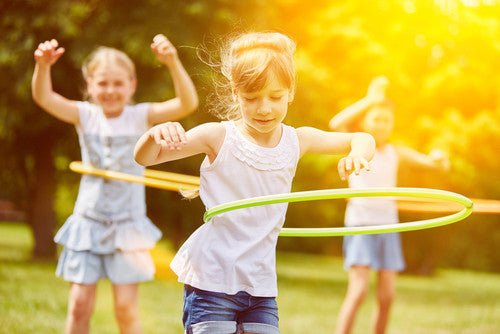Global views on child education have changed over the years. More recently, the focus has shifted to making sure that kids get enough outside time. This allows them to develop important skills and benefit from fresh air and sunshine.
Any old idea that has become new once more receives a label, and this one is called “Nature Play”. Researchers are realising just how important this concept is in early childhood. Kids are benefitting from the fun factor as well, as every kid enjoys natural play areas.
Playing outside used to be regarded as normal for children and now it has to be encouraged. Government departments all over Australia are sponsoring a move toward more natural play, as they see how important that kind of play is to the children’s development.
Supervision still plays an important role, especially when young children are involved, but unstructured play definitely has its benefits. It allows children to be more creative and to form independence.
Nature Play is a way to get children back to the basics and to doing what they used to do a generation or two ago. Years ago, it was assumed that children would spend most of their free time outdoors playing, exploring the bush, playing outside games or just appreciating their natural environment. This has changed over the last decade or so, though, as children now spend more time indoors than outdoors. Most of them prefer it this way, too.
Children have adapted to computer games, televisions and internet browsing as primary pastimes. This has had a negative impact on their development and health, and now obesity, depression and a variety of health problems and issues have become far more commonplace as a result.
A large number of studies have confirmed that illness and a sedentary lifestyle are connected. A report from the Department of Health in 2012 on sedentary behaviour noted that children between the ages of 5 and 17 spend about an hour and half each day engaged in physical activity as opposed to two hours of screen time. The report showed that as the children got older, screen time increased and physical activity decreased. The recommendation of the report was that children between the ages of 5 and 17 could reduce their risk of illness by being more active each day.
Muddy Nature Play
The idea behind Nature Play is to get children to spend time in nature and make it their playground. There have been numerous benefits to this method of play discovered already, and scientific studies back up the notion that keeping kids in a germ-free environment makes them less resistant to bacteria. What we have found is that children who are kept in sterile environments have weaker immune systems because they are not being exposed to bacteria found in the dirt.
A major component of Nature Play is encouraging children to get their hands dirty and spend some time in the mud and dirt. This is meant to improve their immune systems through exposure to nature.
Martin Maudsley and Stuart Lester, who are early learning researchers, say that through a closeness to nature, children can become more independent and self-aware. They will be free to use their imaginations when playing outside, and an outdoor setting has no real structure to it, which means that their imaginations can run free.
Playgrounds with natural elements in them use plant life and bushland to improve motor skills and help kids to have fun. Many parkland areas are inspired by what the land originally looked like and their owners are trying to get back to those sensibilities and the benefits of natural play areas.
Nature Play is all about playing in an unstructured way. This means that children are free to learn, make up stories and explore however they like, either by themselves or in a group. They can use their own thoughts to structure their play to the way they like, making use of the natural elements around them.
As children, play outside they will absorb vitamin D from the sunlight and will exercise their bodies in ways they cannot do while being inside. They can be observed from a distance and chat with each other in a safe play area.
Nature Play in its many unstructured forms can include digging in the earth, creating houses out of brush or simply playing tag or hide and seek. There is no limit to what games and activities the children can engage in while still staying safe as they play.
Steiner School System
One of the forefathers of the Nature Play system of education was Rudolf Steiner. In the 1800s, he created classes that encouraged kids to play with natural materials. This included wood, clay and other items taken from nature. Children were urged to make crafts from these natural materials. The movement he created aims to keep a calm environment for children to flourish in, garnering a respect for adults and helping creativity to thrive.
Plant and Wildlife Education
One of the most important parts of a child’s education is learning about plants and animals. Children can use seeds in crafts, and they can be taught how to draw basic natural plants and animals, which helps them learn how to use colour.
Promoting Sustainability
By promoting Nature Play, educators are helping to invest in the future of the environment. Children will learn about the world around them and appreciate more than if they spent most of their time indoors. They will better understand important issues and inspire government agencies to create more green spaces. The development of green areas will benefit the surrounding plant and animal life. Lobbying for the benefit of the children can also help to protect our natural parks and reserves.
Helping More Than Just Kids
Numerous studies show that those towns and cities that emphasize natural areas are having a positive effect on people’s health. Those health benefits extend to adults as well as children. Getting out in nature can be a shared experience between adults and their children. It is important for adults to use their imagination as well, and the experience of being outside can improve adults’ physical and emotional wellbeing.
Nature Play should be coupled with a nutritious diet to maximise benefits. This will ensure that they have ample energy and will boost their imaginations. Equally as important, it will teach children about the value of preserving their natural environment.
By being outside, children will develop a love of the outdoors and the bush, and they will learn important information about Australia’s forests and outdoors that will stay with them for the rest of their life. Structured play can benefit children as well, building important social skills, but unstructured play is just as important and it is a key factor in developing the imagination.



